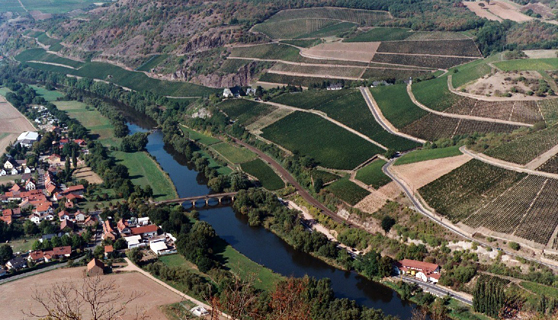2005 Clos Roche Blanche Cuvée Côt Touraine Red Loire Wine France. 12% alcohol. $18.99. Chambers Street; Lyle/Asimov bottle. Imported by Louis/Dressner, New York. http://www.louisdressner.com
Rahsaan wrote a perfect tasting note to describe an earlier vintage, one that works almost as well for me for this vintage: "Beautiful ripe firm and drinking much better than I expected/feared. Sure there are some tannins on the finish, but they do not dominate as the wine is primarily about a firm square compact focused dose of fresh floral cot fruit. Yes, it can do all of that. And more. Absolutely phenomenal for the price. As always." My only emendation: the tannins were beautifully integrated in this bottle -- the wine was absolutely seamless and delicious. 4*+. Great QPR.
Regards, Bob
Notes:
Malbec: This red grape accounted for the famous 'black wine' of Cahors where it is known as the 'Cot' and the 'Auxerrois', and just to confuse matters further, when grown in St. Emilion, it is known as the 'Pressac'. A small, dark, thick-skinned grape, it gives intense colour, big tannins and lots of structure to the wines and is generally blended with a little Merlot for subtlety. Has become very popular in Argentina where it adapts well to the hot climate.
Touraine, a Loire Valley appellation, designates a large viticultural area around the city of Tours. The vineyards of Clos Roche Blanche were planted on the Touraine hills bordering the Cher river by the Roussel family at the end of the 19th century and have remained in the family since. Catherine Roussel took over this 28-hectare estate in 1975 from her father, and was later joined by Didier Barrouillet, who tends the vineyards and makes the wine. Both are enthusiastic proponents of non-interventionist winemaking. Their soil is poor, mainly clay with flint over a limestone subsoil. The varietals grown are Cabernet (Sauvignon and Franc), Gamay, Côt (or Auxerrois, the grape of Cahors) and Sauvignon Blanc. Roussel and Barrouillet keep yields low by maintaining old vines, using organic fertilizers in moderation and growing grass between and plowing under the rows. They converted the vineyards to organic farming and, with the 1995 vintage, received the official “organic agriculture” accreditation. The vines are treated with copper and sulfur solutions, and plant decoctions (a mixture of nettles and other herbs) used in biodynamic viticulture. Louis/Dressner website.
History: A Celtic tribe called the Turons inhabited Touraine 2000 years ago. In 1044, the control of Touraine was given to the Angevins, who became kings of England in 1154 with the castle Chinon as their greatest stronghold. In 1205, Phillip II Augustus of France regained Touraine, and was made into a royal duchy. In 1429 when Saint Joan of Arc had an historic meeting with the future Charles VII at Chinon. Throughout the late 1400s and 1500s, Touraine was a favorite residence of French kings; the castles were converted to Renaissance châteaux. The royal duchy became a province in 1584, and was divided into departments in 1790.

